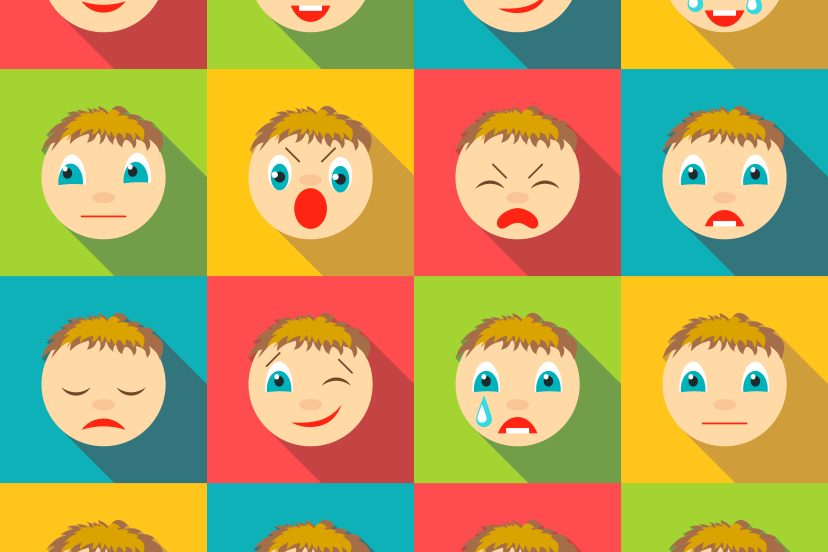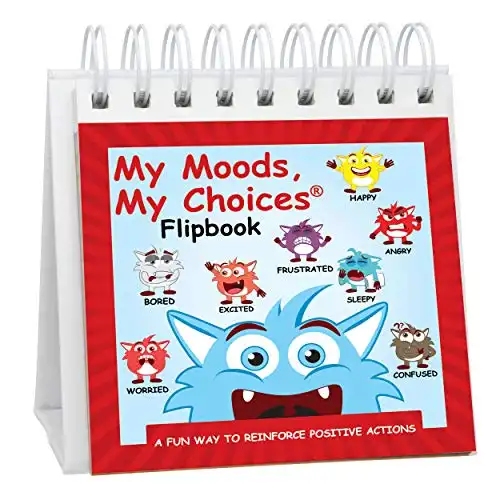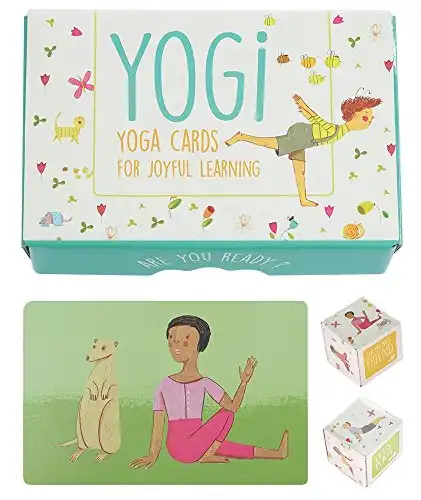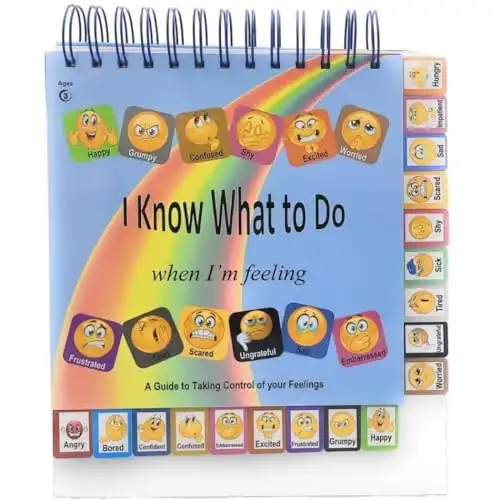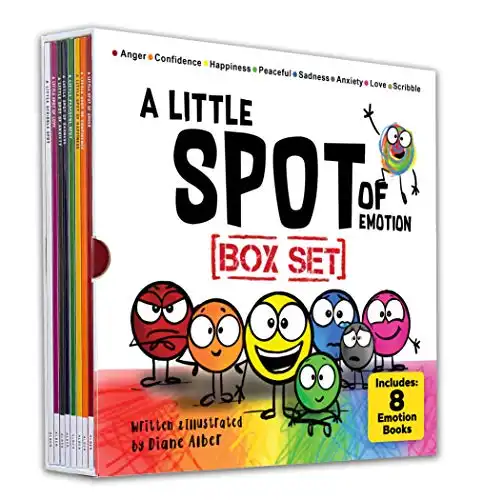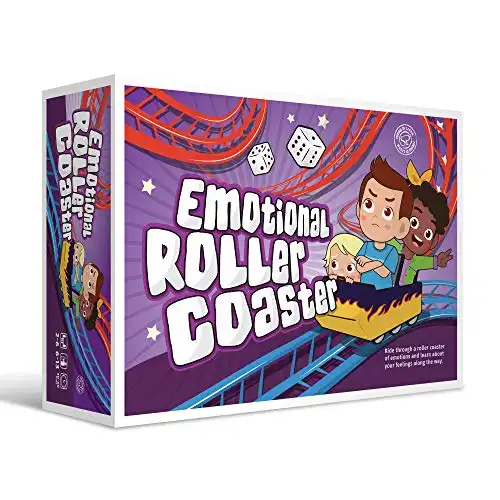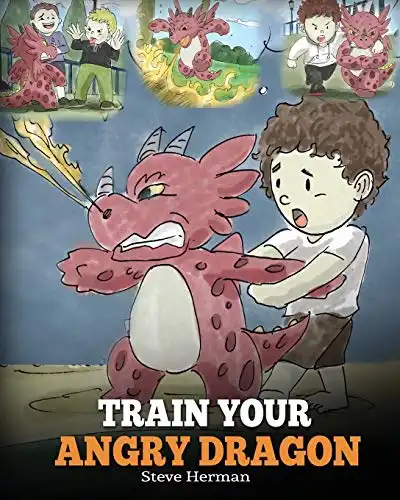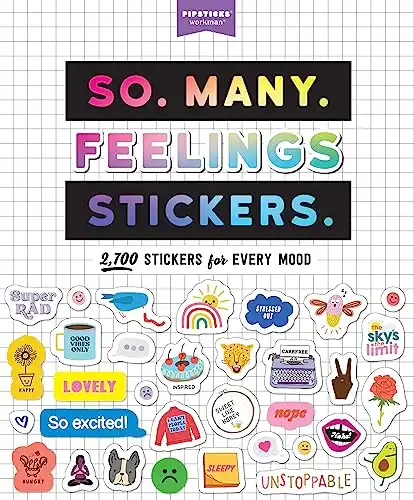Emotions Chart for Kids: An Essential Tool for Emotional Growth and Self-Regulation
Navigating the world of emotions isn’t just a challenge for adults; kids too grapple with understanding and expressing their feelings. That’s where an incredible tool steps in – the emotions chart for kids. As a fervent advocate for child development, I’ve witnessed the transformative power of these charts. They’re not just tools; they’re bridges connecting children to a deeper understanding of themselves and others.
What is an Emotion Chart For Kids?
An Emotion Chart for Kids is a visual tool designed to help children identify, express, and manage their feelings in a healthy way. It typically features a range of emotions represented by faces, words, or colors, each depicting different feelings such as happiness, sadness, anger, and fear.
This chart serves as a bridge between young minds and the complex world of emotions, providing a simple yet effective way for kids to articulate how they’re feeling. By using this chart, children can better understand their emotional responses to various situations, fostering emotional intelligence from an early age
Why Understanding and Managing Feelings Matters
In a world that is increasingly acknowledging the importance of mental health and emotional well-being, understanding and managing feelings has become a cornerstone of healthy development. This segment explores why these skills are essential, not only for children but across all stages of life.
The Foundation of Emotional Intelligence
Emotional Intelligence (EI) is the ability to understand, use, and manage our own emotions in positive ways. It allows us to communicate effectively, empathize with others, overcome challenges, and defuse conflict. EI is built upon the pillars of emotional awareness and regulation. By understanding their feelings, children learn to navigate the social complexities of their environment, adapt to change, and solve personal and interpersonal problems more effectively.
Enhanced Social Skills and Relationships
Navigating Social Interactions: Understanding and managing emotions are key components in developing strong social skills. Using emotions chart for kids helps children to not only recognise their own emotions but also to interpret others’ emotional states, fostering empathy and cooperation. This skill is vital for forming friendships, working in teams, and building lasting relationships.
Conflict Resolution: Emotions can escalate conflicts or help resolve them. When children learn to manage their feelings, they are better equipped to approach disagreements calmly and rationally, leading to healthier resolutions and stronger relationships.
Improved Mental Health
Resilience: Understanding that feelings are transient and manageable helps children develop resilience. They learn to cope with life’s ups and downs, reducing the risk of anxiety and depression.
Emotional regulation strategies, such as deep breathing, yoga for kids, taking breaks, or discussing their feelings, empower children to handle stress more effectively.
Self-Esteem and Confidence: Recognizing and expressing emotions contributes to a stronger sense of self. Children who understand their feelings are more likely to feel confident in their ability to face new situations, make decisions, and express themselves. This self-assuredness promotes a positive self-image and higher self-esteem.
Academic Success and Future Well-being
Focus and Engagement: Emotional regulation is closely linked to academic performance. Children who can manage feelings of frustration or excitement are better able to concentrate, stay engaged, and perform well in school.
Laying the Groundwork for Future Success: The skills gained from understanding and managing emotions extend far beyond childhood. They lay the groundwork for a well-adjusted adulthood, contributing to success in personal and professional arenas. Emotional intelligence is a predictor of better job performance, leadership abilities, and personal life satisfaction.
Cultivating a Supportive Environment
Open Communication: When children feel comfortable discussing their emotions, it opens lines of communication with parents, teachers, and peers. This openness creates a supportive environment where children feel safe to express themselves and seek help when needed.
Preventing Behavioral Issues: Many behavioral issues stem from unaddressed emotional problems. By equipping children with the tools to understand and manage their emotions, we can prevent many of these issues from arising, promoting a more harmonious and productive environment at home and in schools.
Embedding Emotion Charts For Kids into Everyday Life
Integrating the practice of recognizing and discussing emotions into daily routines and conversations is a powerful strategy to help children understand and manage their feelings. This consistent approach not only reinforces the importance of emotional awareness but also provides regular opportunities for children to practice and develop their emotional intelligence skills. Here’s how to make emotional learning a seamless part of everyday life.
Starting the Day with Emotional Check-Ins
Morning Emotion Check-In: Begin each day with a simple emotion check-in. Ask your child how they are feeling today and encourage them to identify their emotion using the emotion chart.
This practice sets a tone of emotional awareness and openness for the day ahead. It’s a chance to address any lingering feelings from the previous day and to set positive intentions for the day to come.
Integrating Emotions into Routine Activities
During Meal Times: Meals provide an excellent opportunity for conversation. Discuss the day’s events and how they made everyone feel. This can be a time to explore a range of emotions related to school, friends, or family activities, helping children to understand that it’s normal to experience a variety of feelings.
Story Time and Emotions: Reading stories together can be a way to discuss emotions. Talk about how characters might be feeling and why, asking your child to relate those emotions to their own experiences. This not only enhances empathy but also helps children understand that emotions are a universal part of the human experience.
There are a wide variety of books on controlling your emotions for kids. Find some of them here.
Using Play to Explore Emotions
Emotional Role-Play: Through open ended play, children can express and manage their feelings. Encourage role-play scenarios where they can act out different emotions and solutions to emotional challenges. This kind of play allows children to experiment with emotional expressions and coping strategies in a safe environment.
Games and Activities: Incorporate games that involve identifying emotions, such as fun board games or flash cards. These activities make learning about feelings fun and engaging, reinforcing emotional concepts through play.
Reflecting on the Day
Evening Reflection: Using emotions charts for kids at the end the is a great way of reflecting on the feelings they experienced throughout. Discuss what made them feel happy, sad, frustrated, or excited. This reflection not only helps children process their day but also reinforces the understanding that it’s normal to experience a range of emotions.
Encouraging Emotional Expression
Validating Feelings: Whenever your child expresses an emotion, validate it. Acknowledge their feelings and show empathy. This validation is crucial for making them feel heard and understood, and it encourages them to continue sharing their emotions.
Modeling Emotional Expression: Lead by example. Share your emotions and how you manage them. When children see adults discussing their feelings openly and healthily managing them, they learn to do the same.
Making Emotional Learning Consistent
Consistency is Key: The more consistently these practices are integrated into daily routines, the more natural they will become for your child. Over time, identifying and expressing emotions will become a regular part of their day, laying the foundation for strong emotional intelligence.
Overcoming Resistance To Emotions Charts For Kids
Resistance from children when introducing new concepts or routines, including emotion charts and discussions about feelings, is not uncommon. This resistance can stem from discomfort, a lack of understanding, or simply the novelty of expressing emotions in such a direct manner. However, there are effective strategies to engage children gently and encouragingly, transforming potential reluctance into enthusiasm for emotional learning.
Understanding the Source of Resistance
Identify the Cause: Begin by identifying why a child might be resistant. Is the concept of an emotion chart for kids new or confusing to them? Are they uncomfortable expressing certain feelings? Understanding the root cause is the first step in addressing it effectively.
Tailoring the Approach
Customize the Experience: If a child is hesitant to use an emotion chart or discuss their feelings, customize the approach to better suit their interests and comfort level. For example, if a child loves reading, encourage them to read about their feelings instead of using a standard chart. Incorporating their hobbies and preferences can make emotional learning more appealing.
Introducing Emotion Concepts Gradually
Start Small: Introduce emotional concepts and the use of an emotion chart gradually. Begin with emotions that are easier for the child to recognize and discuss, such as “happy” or “sad,” before moving on to more complex feelings. This gradual approach helps build confidence and familiarity.
Using Storytelling and Play
Incorporate Stories and Play: Children often express themselves more freely through play and storytelling. Use stories about characters who experience a range of emotions and navigate different scenarios. This method allows children to explore emotions indirectly, making it less intimidating to talk about their own feelings.
Creating a Supportive Environment
Foster a Safe Space: Make it clear that all emotions are valid and that it’s safe to express them. A supportive and non-judgmental environment encourages children to open up about their feelings without fear of criticism or dismissal.
Celebrating Efforts and Progress
Acknowledge Participation: Recognize and celebrate any effort a child makes towards expressing their emotions or using the chart. Positive reinforcement encourages continued participation and reinforces the value of what they’re learning.
Providing Choices and Control
Offer Choices: Allow children some control over how they engage with emotional learning. For instance, give them the option to draw emotions, use stickers, or even act them out. Having choices can reduce resistance and increase their sense of autonomy.
Patience and Persistence
Be Patient and Persistent: Overcoming resistance is often a matter of time and repeated exposure. Maintain patience and keep integrating emotional learning into daily routines gently and consistently. Over time, most children become more open and comfortable with the process.
Connecting Emotions to Real-Life Situations
Relate to Real Life: Help children make connections between their emotions and real-life situations. Discussing emotions in the context of actual experiences can make the concept more concrete and relatable, reducing resistance by demonstrating the practical utility of understanding and managing feelings.
The Lasting Benefits of Emotion Charts for Kids
Emotion charts are more than just a temporary aid; they lay the groundwork for emotional intelligence that lasts a lifetime. By investing time in these tools, we’re giving our children a priceless gift: the ability to navigate their emotions with confidence and empathy.
FAQ’s
At what age should I introduce an emotions chart to my child? Introduce an emotion chart around 3 or 4 years old, adjusting the complexity of emotions based on your child’s development and understanding.
How can I encourage my child to use the emotions chart regularly? Incorporate the chart into daily routines, use it to discuss feelings openly, and model emotional expression by sharing your own feelings.
Can emotion charts be used in classrooms as well as at home? Absolutely, emotion charts for kids are great tools for classrooms to foster emotional awareness and empathy among students.
How do I explain the emotion chart to my child in a way they’ll understand? Compare the emotion chart to a weather chart, explaining that just like the weather, our feelings change, and it’s okay to express how we’re feeling.
What if my child misinterprets an emotion or can’t find one that they’re feeling on the chart? Use it as a learning moment to discuss their feelings further and consider adding new emotions to the chart together, ensuring they feel heard.

